
Baldur's Gate 3 Character Creation Guide - The best classes, races, and subclasses to choose
Before you take your first steps in Baldur's Gate 3, you'll need to create a character. And like the Dungeons & Dragons tabletop RPG it's based on, Baldur's Gate 3 includes an intimidating amount of options. In light of the game's recent release, we've come up with a guide to help inform your choices and give a few tips to make your time in Faerun a bit more exciting (and pleasant). Read on for RPG Site's Baldur's Gate 3 Character Creation guide.
Note: Some of the information in this guide is based on the pre-release Early Access version of the game. With the game fully launched are reviewing all the guide's content and will update this and all of our Baldur's Gate 3 guides to correct any discrepancies we find. We thank you for your patience and welcome your feedback.

Before You Begin
This guide will summarize pertinent information about each class and racial choice available to a new player, with the goal of helping you decide what class to pick to go through the game with. The in-game tooltips also provide plenty of detailed info to help you learn as you go. Baldur's Gate is a massive game designed with an eye towards supporting a player's free expression and roleplay, so don't feel shackled to the advice we give or a need to "min-max" your character. There's no wrong way to play, so follow your heart, and treat the info here as a set of suggestions rather than a hard set of rules.
Picking Your Origin
Your Origin is the first thing you'll pick when entering Baldur's Gate 3 character creation. You've got a choice between a "Custom" Origin where you create a character in all aspects, and an Origin Character. An Origin Character is a preset character with their own distinct identity, narrative, background, and unique characteristics. Any Origin Characters you do not choose become recruitable companions once you begin the game (except for The Dark Urge). The rest of this guide is written presuming you pick the Custom origin, which allows you the full range of options to select from.
These are the available Origin Characters at launch in Baldur’s Gate 3. For readability, we're only referring to the Origin Characters' basic information here, such as their race and class. Our Companion Guide will have more detailed information about each of the Origin Characters.
Baldur’s Gate 3 Origin Characters
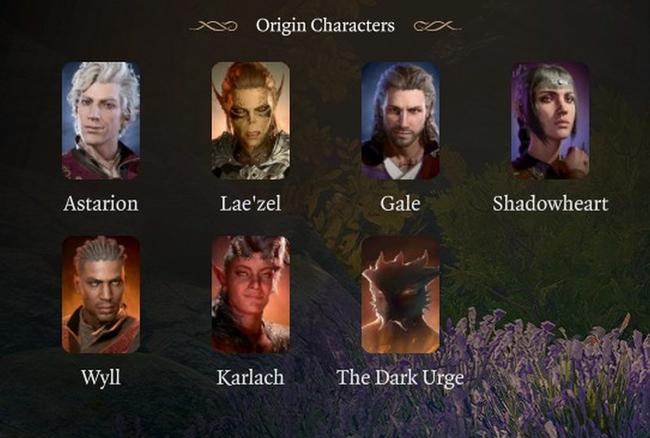
- Astarion - High Elf Rogue
- Gale - Human Wizard
- Lae’zel - Githyanki Fighter
- Karlach - Tiefling Barbarian
- Shadowheart - High Elf Cleric
- The Dark Urge - Customizable*
- Wyll - Human Warlock
*The Dark Urge is a unique customizable Origin character. You can choose their species, gender, and class, just like the Custom origin. However, they have a unique set of roleplaying motivations and mechanics characterized by the eponymous “Dark Urge”, which means a Dark Urge playthrough will be distinct from that of a custom character. If you do not choose The Dark Urge as your protagonist, they will become an NPC you can encounter, but not recruit, unlike the other Origin Characters.
Background Choices
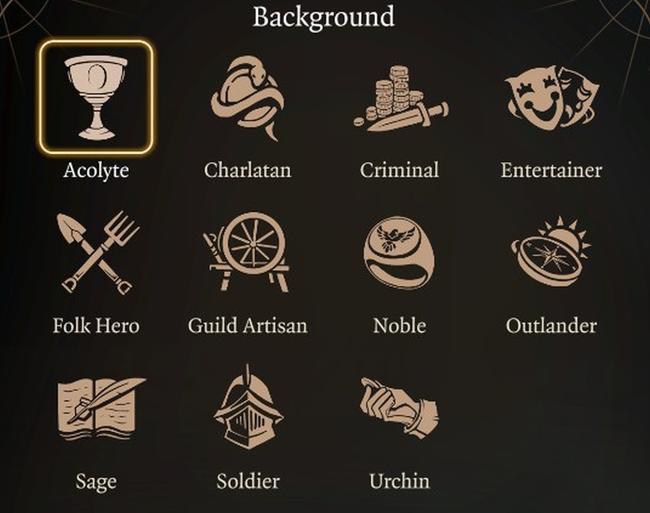
Unlike the Origin Characters, Custom characters can select their Background freely. Your background choice is independent of your species and class. It will affect some choices in dialog by bringing up relevant options, but more importantly, it adds certain skill proficiencies that you might not have access to otherwise. Skill Proficiencies grant bonuses to skill checks.
While roleplaying is the best motivation for your background choice, if you’re concerned with getting the most out of a background, try picking ones with skill proficiencies that complement your existing stats, to maximize the chances of a positive result. Conversely, you can choose a background with proficiencies in skills where you have lower bonuses, reducing your chances of failure. Additionally, certain proficiencies open up options during quests. Sleight of Hand might make it easier to pick a lock or disarm a trap with the right equipment, for example, and Intimidation or Persuasion might make it easier to avoid violence during a quest.
Your background choices and their respective Skill Proficiencies are:
- Acolyte - Insight and Religion
- Charlatan - Deception and Sleight of Hand
- Criminal - Deception and Stealth
- Entertainer - Acrobatics and Performance
- Folk Hero - Animal Handling and Survival
- Guild Artisan - Insight and Persuasion
- Noble - History and Persuasion
- Outlander - Athletics and Survival
- Sage - Arcana and History
- Soldier - Athletics and Intimidation
- Urchin - Sleight of Hand and Stealth
About Ability Scores
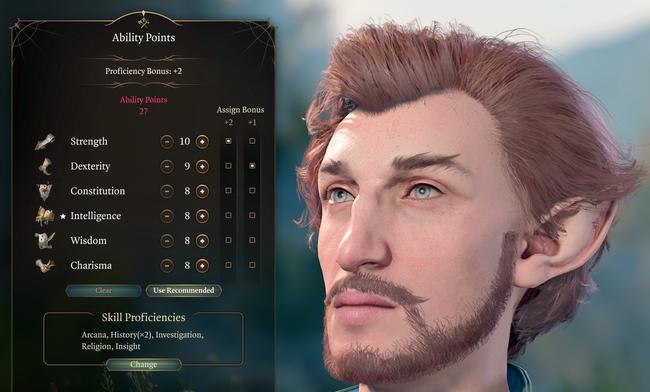
In Dungeons & Dragons, your Ability Scores represent your physical and mental qualities, using a number with a maximum of 20 (though scores are capped at 17 during Character Creation). Your Skill Checks, Ability Checks, and Saving Throws are tied to different abilities, and having high Ability Scores grants your character bonuses to the results, helping ensure positive results. Conversely, having a low Ability Scores (such as below 10) nets a penalty to associated rolls, making you more likely to fail a roll tied to that ability.
Each class also uses certain Ability Scores as a primary stat, helping determine their performance. For example, Barbarians and Fighters use Strength as a primary Ability, while Wizards use Intelligence and Clerics use Wisdom to power their spellcasting. Every 2 points of an Ability Score above 10 adds a +1 proficiency bonus to saving throws, attack rolls, and skill checks associated with that ability. For example, a score of 12 Strength gets a +1 bonus, while a score of 14 gets +2, and so on.
In general, you want to have high Ability Scores in your chosen class’ primary Abilities, leaving average or weaker numbers to less-critical Abilities. A Barbarian usually needs Strength more than Intelligence to do what they do.
How Baldur’s Gate 3 Ability Scores are different from Dungeons & Dragons 5e
Unlike the standard Dungeons & Dragons 5th edition or the Early Access version of Baldur’s Gate 3, the finalized launch version of BG3 has removed race-based Ability Score bonuses. This means that, for example, Humans no longer receive a blanket +1 to their abilities, Shield Dwarves no longer get a “native” +2 bonus to Strength, and so on.
Instead, during character creation, you’ll set your Ability Scores after configuring your class. You’ll then be able to allocate points freely using a “point buy” system. Using point buy, you have a pool of Ability Points you can assign to any score freely up to a maximum of 20. The caveat is that increasing a score to higher levels costs more Ability Points, leaving you with fewer points to distribute elsewhere.
You’ll have two bonuses on hand to further boost your favorite Abilities. You can add a free +1 bonus to one score, and a +2 bonus to another. Thus, you’re free to choose your race based on narrative considerations, without having to worry about “min-maxing” your Ability Scores.
After creating your character, you can also increase your Ability Scores using Feats earned at Levels 4, 8, and 12.
If you’d rather not mess around with your Ability Scores manually, the game also has a recommended setting you can use that will give you a preset stat allocation tailored to your class choice.
Picking your Race and Appearance

If you’re playing a Custom character or as The Dark Urge, you’ll be able to select your race. There are 11 races in Baldur’s Gate 3, and your choice helps define your character.
With ability scores removed from racial choices, the different races and subraces in Baldur’s Gate 3 now differ primarily through their weapon and skill proficiencies, racial features, and movement speeds. They also differ narratively, as your racial choice introduces reactivity in the game world, such as from NPCs. Expect to get a different reception playing as a Lloth-sworn Drow than you would when playing as a Human or High Elf.
You'll also be able to adjust your appearance accordingly. Most of the races have two body types available, but some, like Humans, Tieflings, and Elves, have four, with the other two representing more muscular, taller types (like Karlach). Your gender expression can be set by editing the appearance of your character, under "General" options.

Dragonborn
By far the race with the largest number of subraces in Baldur’s Gate 3, your choice of subrace as a Dragonborn will confer a damage resistance type and also change the damage of your breath weapon.
Dragonborn Racial Features
- Movement Speed: 9m per turn
- Draconic Ancestry and Breath Weapon based on subrace.
Dragonborn Subraces
Black Dragonborn
- Breath Weapon: Cone of Acid
- Acid Resistance
Blue Dragonborn
- Breath Weapon: Cone of Lightning
- Lightning Resistance
Brass Dragonborn
- Breath Weapon: Column of Fire
- Fire Resistance
Bronze Dragonborn
- Breath Weapon: Cone of Lightning
- Lightning Resistance
Copper Dragonborn
- Breath Weapon: Cone of Acid
- Acid Resistance
Gold Dragonborn
- Breath Weapon: Cone of Fire
- Fire Resistance
Green Dragonborn
- Breath Weapon: Cone of Poison
- Poison Resistance
Red Dragonborn
- Breath Weapon: Cone of Fire
- Fire Resistance
Silver Dragonborn
- Breath Weapon: Cone of Ice
- Cold Resistance
White Dragonborn
- Breath Weapon: Cone of Ice
- Cold Resistance

Drow
A subterranean spin-off of the Elven race, Drow vary mainly through differences in their proficiency bonuses from standard Elves. They have Superior Darkvision, making them more effective in dark areas and night fighting. There are no mechanical differences between Seldarine and Lloth-sworn Drow (though there are plenty of narrative ones!).
Drow Racial Features
- Movement Speed: 9m per turn
- Skill Proficiency: Perception (Keen Senses)
- Gear Proficiency: Rapier, Shortsword, Hand Crossbow
- Fey Ancestry: Bonus to saves vs. charm, immune to magical sleep
- Superior Darkvision: Can see in the dark up to 24m

Dwarf
Sturdy Dwarves emphasize resilience and toughness. Your choice of Gold, Shield, or Duergar subraces adds variance across gear proficiencies and culturally-rooted bonuses. Duergar also get enhanced Darkvision and additional resistance.
Dwarf Racial Features
- Movement Speed: 7.5m per turn
- Dwarven Resilience: Advantage on saves against Poison and resistance to Poison damage
- Darkvision: can see in the dark up to 12m
- Gear Proficiency: Battleaxe, Handaxe, Light Hammer, Warhammer
Dwarf Subraces
Gold Dwarf
- Dwarven Toughness (Max HP increases by 1 every level)
Shield Dwarf
- Gear Proficiency: Light and Medium Armor
Duergar
- Superior Darkvision (can see in the dark up to 24m)
- Duergar Resilience (Advantage on saves vs. Illusions, Charms, Paralysis)
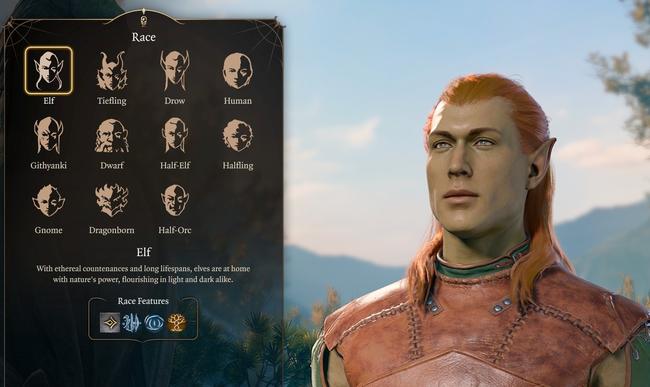
Elf
Elves have a few proficiencies in “Elven” weapons, while their relationship to the Fey lends them resistance to certain effects, as well as Darkvision. The choice between a High Elf and a Wood Elf is mainly affected by whether you want a free Cantrip spell, or want to move significantly faster than anyone else.
Elf Racial Features
- Movement Speed: 9m per turn
- Gear Proficiency: Longsword, Shortsword, Longbow, Shortbow
- Skill Proficiency: Perception (Keen Senses)
- Fey Ancestry: Bonus to saves vs. charm, immune to magical sleep
- Darkvision: can see in the dark up to 12m
Elf Subraces
High Elf
- Cantrip: Select a Cantrip from the Wizard spell list.
Wood Elf
- Movement Speed is 10.5m (Fleet of Foot)

Githyanki
Githyanki gain a powerful bonus from their extraplanar origins. They can temporarily enhance their proficiency in every Skill attached to an Ability, such as Intelligence for affecting Arcana or History checks or Dexterity for Acrobatics checks. They also have a particular fondness for wielding swords and can do a bit of telekinesis, as a treat.
Githyanki Racial Features
- Movement Speed: 9m per turn
- Astral Knowledge: Gain Proficiency in all Skills of a certain Ability once per long rest.
- Gear Proficiency: Light Armor, Medium Armor, Shortsword, Longsword, Greatsword
- Githyanki Psionics: Mage Hand cantrip
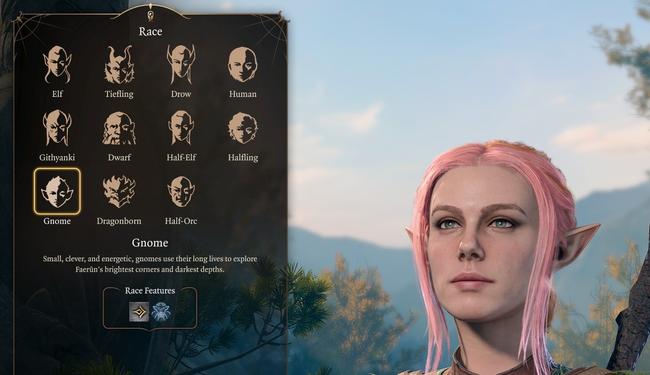
Gnome
Small-statured Gnomes might not be the most physically imposing race, but they have sharp minds and magic flowing through their blood. Gnomish cunning grants them advantage on Saving Throws from Intelligence, Wisdom and Charisma. The subterranean Deep Gnomes also have a natural aptitude for stealth.
Gnome Racial Features
- Movement Speed: 7.5m per turn
- Gnome Cunning (Advantage on Int, Wis, and Cha Saving Throws)
Gnome Subraces
Forest Gnome
- Darkvision (can see in the dark up to 12m)
- Spell: Speak with Animals
Rock Gnome
- Darkvision (can see in the dark up to 12m)
- Artificer’s Lore (double proficiency bonus on History skill checks)
Deep Gnome
- Superior Darkvision (can see in the dark up to 24m)
- Stone Camouflage (advantage on Stealth checks)
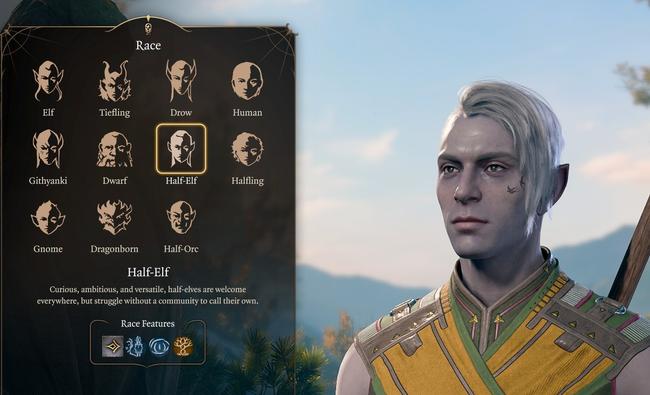
Half-Elf
Half-Elves gain bonuses blended from their human and Elven ancestry, gaining both Human gear proficiencies and Elven Fey resistances. The type of Elf in the Half-Elf’s family tree will also influence their bonus features.
Half-Elf Racial Features
- Movement Speed: 9m per turn
- Darkvision: can see in the dark up to 12m
- Fey Ancestry: Bonus to saves vs. charm, immune to magical sleep
High Half-Elf
- Cantrip: Select a Cantrip from the Wizard spell list.
Wood Half-Elf
- Movement Speed is 10.5m (Fleet of Foot)
Drow Half-Elf
- Cantrip: Dancing Lights

Halfling
Halflings can “reroll” certain roll results to turn up better in their favor, making them ideal picks for players who want to get the absolute best results when the dice need throwing.
Halfling Racial Features
- Movement Speed: 7.5m per turn
- Lucky: when rolling a 1 on Attack Roll, Ability Check, or Saving Throw, you can reroll the die and use the new result).
- Brave: Advantage on saves against Fear
Lightfoot Halfling
- Naturally Stealthy: Advantage on Stealth checks.
Strongheart Halfling
- Strongheart Resilience (advantage on saves against Poison and resistance to Poison damage)
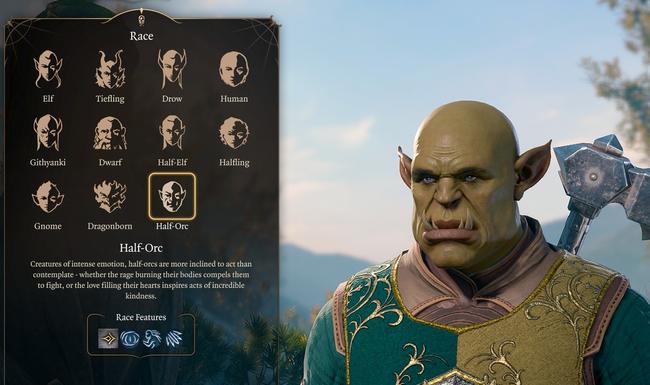
Half-Orc
Half-Orcs have a strong physique but have a bit of that Barbarian in their blood, buffing their resilience and weapon damage. Half-Orc racial bonuses are ideal for a martial combatant that wants to do as much damage as possible.
Half-Orc Racial Features
- Movement Speed: 9m per turn
- Darkvision: can see in the dark up to 12m
- Savage Attacks: When hitting a critical attack, extra damage is rolled using triple dice instead of double.
- Relentless Endurance: Will survive a deadly hit with 1 HP instead of being Downed.
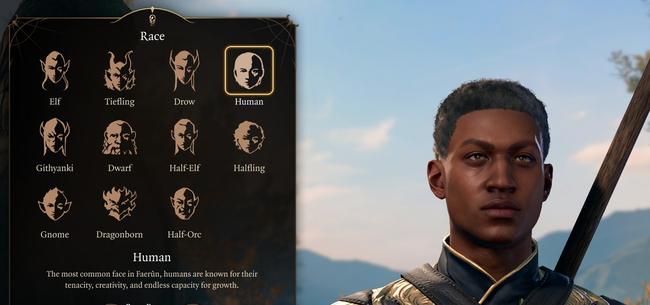
Human
Long treated as the “default” race in D&D, Human racial bonuses are inspired by the very Human tendency to live in a society. The Civil Militia bonus gives humans proficiency with various polearms, and the Human Versatility bonus gives them a bump to an extra skill and a strong back for carrying gear and sundries.
Human Racial Features
- Movement Speed: 9m per turn
- Gear Proficiency: Spears, Pikes, Halberds, Glaives, Light Armor, Shields
- Human Versatility: Additional Skill Proficiency, 25% bonus to carrying capacity
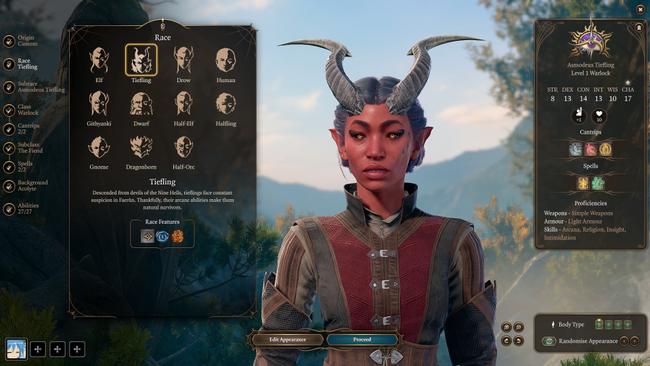
Tiefling
With infernal blood flowing through their veins, Tieflings are differentiated by their archfiend ancestors, with certain powers based on whether they're related to the hellish lords Asmodeus, Zariel, or Mephistopheles.
Tiefling Racial Features
- Movement Speed: 9m per turn
- Hellish Resistance: Resistance to Fire damage.
- Darkvision: can see in the dark up to 12m
Tiefling Subraces
Asmodeus Tiefling
- Cantrip: Produce Flame
Mephistopheles Tiefling
- Cantrip: Mage Hand
Zariel Tiefling
- Cantrip: Thaumaturgy
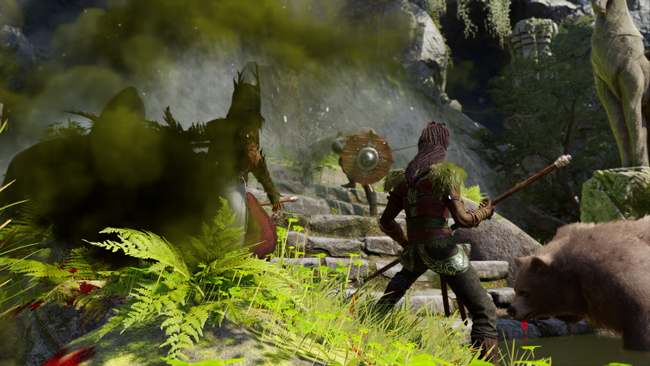
Picking Your Class
Picking a class helps define your role and playstyle in Baldur’s Gate 3. You’ll have room to experiment with different builds and subclasses as the game goes on, but each class does have a general focus. Choose your class wisely, as it will define how you approach each challenge, particularly in the early game. You’ll also choose a subclass to further specialize your character. Some classes choose their subclass at creation (like Warlocks and their Pact) and others choose at Level 2 or Level 3.
This part of the guide will focus on the basics of each class, to help you pick a general approach. More details about each class can be found in the different class guides, along with tips about gear, builds, subclasses, and multiclass options.
About Respeccing Your Class Choices
Baldur’s Gate 3 will allow you to reset your class choices after the game has begun. It is a narrative-supported feature, one you gain early in the game by encountering a certain NPC. From there, players can “respec”, changing their class build as they like in exchange for gold.
This feature makes it easier to adjust your class build as the game progresses, tweaking certain choices to suit the challenges of the moment. You can even respec companions, allowing you to customize their builds to your liking.
About Multiclassing Characters
Baldur’s Gate 3 allows players to gain levels in multiple classes. This means that the Fighter you start the game with can take up divine magic by gaining a level in Cleric, or tap into their inner martial artist as a Monk. Your Wizard can take up the School of Hitting Things With A Sword, and your Sorcerer can further complicate his natural magic by making a pact with a powerful being as a Warlock.
Unlike standard Dungeons & Dragons, BG3 does not restrict multiclassing options with ability score requirements, so you can choose from the full selection of classes with each level you gain. Be mindful, however, of the dangers of spreading your abilities and skills too thinly. You may find yourself with too few specialized or higher-level options to count on when an encounter starts to get intense.
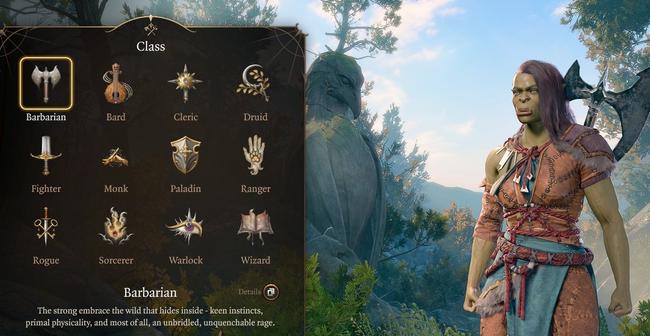
Barbarian
The Barbarian is the party’s melee damage powerhouse. Barbarians get into the thick of combat, throwing caution to the wind and laying enemies low with their Rages. They gain extra attacks, move faster than usual, and can resist debilitating effects. For more detailed info, see our Barbarian Class Guide.
- Danger Sense (Advantage on saves against traps, spells, and surfaces)
- Reckless Attack (Gain advantage on attack rolls, while enemies gain advantage on attack rolls against you)
- Gear Proficiency: Light Armor, Medium Armor, Shield, Simple Weapons, Martial Weapons, Unarmored Defense
- Rage: While raging, deal 2 extra damage with melee and improvised weapons and when throwing objects.
Barbarian Subclasses
- Berserker - A Rage-focused Barbarian subclass that gains additional Rage charges, and an enhanced form of Rage called Frenzy.
- Wildheart - A Barbarian with Druidic elements. Gains Speak With Animals, and the Bestial Heart abilities, which tailor your Rages with unique, animal-derived abilities.
- Wild Magic - Wild Magic Barbarians harness surprising arcane potential to produce surges of powerful, unpredictable magical effects.
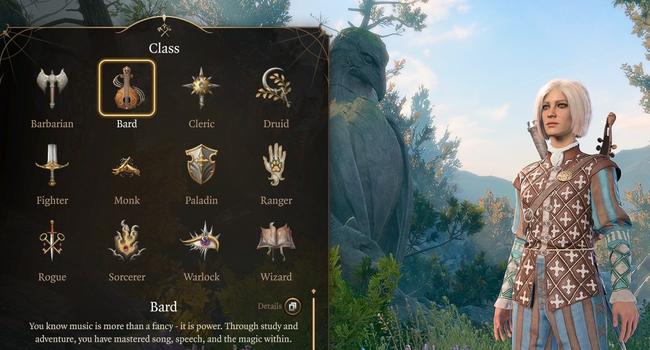
Bard
The Bard takes a unique approach to spellcasting and combat, weaving weapon attacks and spells into a gripping performance augmented by their chosen musical instrument. They have a unique spell list and can buff allies with Bardic inspiration.
- Bardic Inspiration: Inspires allies, allowing them to add bonuses to their next Attack Roll, Ability Check, or Saving Throw.
- Spell Selection: Bard Spells
- Musical Instrument Proficiency
- Gear Proficiency: Light Armor, Simple Weapons, Hand Crossbow, Longsword, Rapier, Shortsword
Bard Subclasses
- College of Lore - a skill- and spell-focused subclass of the Bard that can use Cutting Words to debuff an enemy in combat.
- College of Valor - a melee combat-focused Bard subclass that can wear heavier gear and use Combat Inspiration to increase their melee damage and the damage of their allies.
- College of Swords - the “duelist” Bard subclass, wielding powerful Blade Flourishes to excel in single combat and feats of martial prowess.

Cleric
The classical divine spellcaster, Clerics wield potent magic to heal and support the party, hinder foes, and punish fiends and undead. Unlike Wizards, however, they can wear armor and use shields without compromising their spellcasting ability, giving them some durability on the front lines of combat. Cleric subclasses are based on the player’s chosen Domain, which grants them access to Domain Spells, which are treated as always prepared. Clerics also need to select a Deity to worship upon character creation.
- Cleric Spellcasting
- Gear Proficiency: Light Armor, Medium Armor, Shield, Simple Weapons
- Domain Spells
- Channel Divinity - Unique bonuses based on Domain
Cleric Subclasses (Domains):
- Life Domain - Life Clerics have guaranteed access to healing spells, improved healing output, and heavy armor proficiency.
- Trickery Domain - Trickster Clerics have bonuses that grant boons to Stealth skill checks and domain spells focused on illusions.
- Knowledge Domain - Knowledge Clerics can boost skill proficiencies and improve their spellcasting.
- Nature Domain - Nature Clerics gain a number of Druid-flavored domain spells and can increase the party's elemental damage resistance.
- Light Domain - Light Clerics gain powerful light- and fire-based spells
- Tempest Domain - Tempest Clerics have a number of thunder and lightning-based spells, and can knock enemies around with thunder-infused melee strikes.
- War Domain - War Clerics improve their martial prowess, gaining extra weapon damage, martial weapon proficiency, and extra weapon attacks.
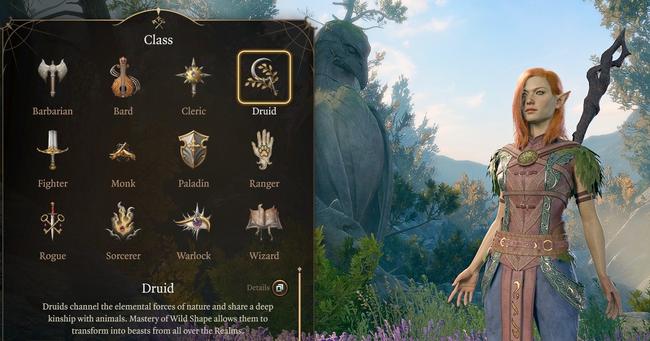
Druid
The natural spellcaster, a Druid at first glance seems to overlap somewhat with a Cleric..at least until the druid turns into a bear and mauls the heck out of some baddies. Druids also have a number of spells related to environmental effects, allowing them to take advantage of things like oil puddles and gas clouds, turning them into force multipliers.
- Druid Spellcasting
- Gear Proficiency: Light Armor, Medium Armor, Shields, Clubs, Daggers, Darts, Javelins, Maces, Quarterstaffs, Scimitars, Slings, Spears
- Wild Shape (can transform into an animal with appropriate stats and abilities)
Druid Subclasses
- Circle of the Land - A Druid focused on casting nature magic, the Circle of the Land Subclass grants access to special spells depending on the selection of an environment type to attune with. They also gain proficiency with Medium Armor and can replenish expended spells without resting on a limited basis.
- Circle of the Moon - Moon Druids lean harder into the benefits of Wild Shape, upgrading the ability to Combat Wild Shape. The upgraded ability can be used more often (and on quicker notice) and includes more powerful forms, like the Polar Bear.
- Circle of Spores - Spore Druids recognize that death is another part of life, and lean into the natural beauty that comes with decay. They gain special abilities normally reserved for necromantic Wizards, including the ability to raise zombie minions and aura-like abilities centered around fungal spores.
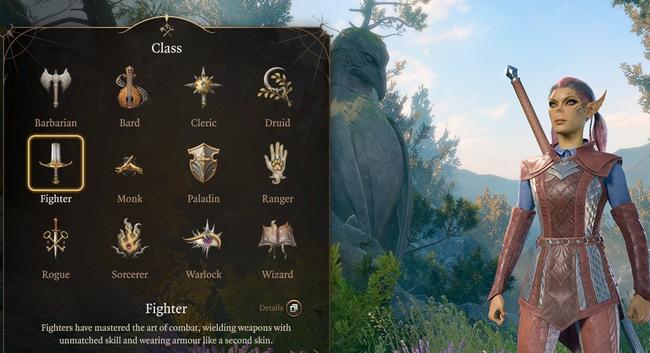
Fighter
Arguably the simplest class to learn and play in Baldur’s Gate 3, the Fighter’s ideology boils down to “hit thing with weapon better than anyone else”. And it’s true. Fighters can choose from multiple combat styles, and their subclasses add welcome complexity that harnesses the power of tactical acumen and even magical mastery.
- Gear Proficiency: Light, Medium, and Heavy Armor, Simple and Martial Weapons
- Second Wind: Heal yourself once per rest
- Action Surge - Gain additional actions
- Fighting Style - Passive bonuses based on a Fighter’s favored fighting style, such as bonuses to ranged weapons, armor bonuses, two-weapon fighting, and more.
Fighter Subclasses:
- Champion - The Fighter’s Fighter. Rather than branching out and diversifying their available skill set, Champions make everything great about the Fighter even better, by blending it with raw physical prowess. Champions gain improved criticals, extra fighting styles, and can easily perform athletic feats.
- Eldritch Knight - Eldritch Knights juice up their weapon expertise with magical might, opening up a selection of arcane spells for their use.
- Battle Master - Battle Masters combine a Fighter’s brute strength with tactical finesse, using a new resource called Superiority Dice to spend on “maneuvers” that almost function like spells. Battle Masters can move enemies around on the battlefield, inflict debilitating status effects, and hinder their efforts to counter your party.
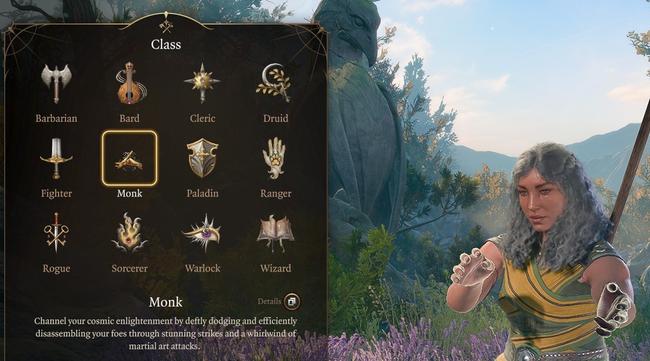
Monk
A highly mobile and self-sufficient melee combat class, Monks blend the prowess of Fighters and Rogues with the near-supernatural abilities of Ki-powered physicality. They can defend themselves without wearing armor and use lighter weapons (or no weapons at all) to bring elemental flair to their techniques.
- Gear Proficiency: Simple Weapons, Shortswords
- Unarmored Defense - Gain Armor Class of 10 + Dexterity and Wisdom Modifiers
- Martial Arts - Scaling damage when using Monk weapons and unarmed attacks, can use Dexterity bonuses for attack and damage rolls
Monk Subclasses:
- Way of the Open Hand - Open Hand Monks focus on manipulating their own and their enemies’ Ki to enhance their unarmed combat abilities. They can heal themselves through Ki and use advanced martial arts on their foes.
- Way of Shadow - A stealth and assassination-focused Monk path with stealthy movement options and the ability to operate effectively in lightless conditions.
- Way of the Four Elements - A Monk subclass that uses Ki disciplines to harness the power of the arcane elements, turning that inner power into martial arts techniques that do elemental damage.
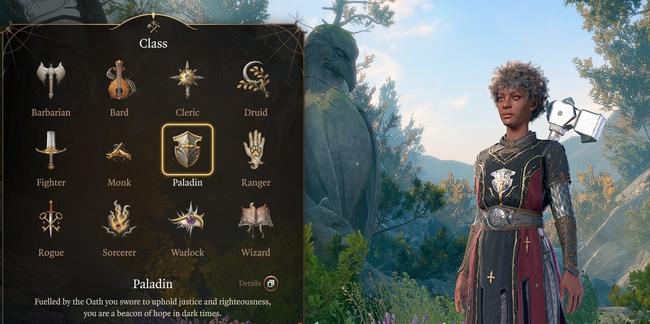
Paladin
A mission-focused hybrid of Cleric and Fighter, the Paladin blends power granted by their sacred oath with martial skill and frontline resilience. Paladins have specialized skills with particular effectiveness against fiendish and undead foes. Their oath is important, but choosing to break it through narrative actions can unlock a “secret” fourth subclass that grants unique benefits in exchange for heavy penalties.
- Gear Proficiency: Light, Medium, Heavy Armor, Shields, Simple and Martial Weapons.
- Channel Oath/Channel Divinity: Channel the power inherent in your oath to trigger unique effects, such as enhancing your weapon or turning undead and fiends.
- Paladin Spells
- Lay On Hands: A Paladin action that heals a target and cures diseases and poison.
- Divine Sense and Divine Smite: Special abilities that improve Paladin combat performance against fiends and undead.
Paladin Subclasses
- Oath of Devotion - The “classical” Paladin leans heavily into the class’ effectiveness against undead and fiends, with holy abilities that deal Radiant damage and protect against unholy or otherworldly threats.
- Oath of the Ancients - Best described as a Paladin “gone Ranger”, these Paladins defend nature and gain abilities suited to the Druid spell list, weaponizing natural features and gaining effectiveness against Fey. They also gain nature-based healing abilities.
- Oath of Vengeance - Paladins that lean more into the more vindictive side of divine justice take the Oath of Vengeance, channeling their powers into class features that focus on single targets and powerful foes.
- Oathbreaker - A “hidden” subclass that only activates when making specific decisions in direct contravention of your oath (this changes based on your oath as well). Oathbreaker Paladins use dark, hellish spells that reflect the shadow that remains when the light in one’s heart is extinguished.
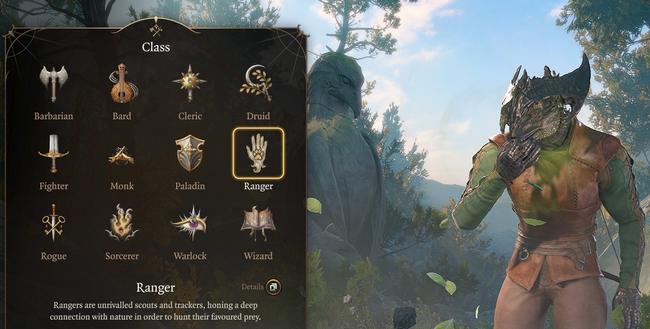
Ranger
The scouts, trackers, and stealth archers of Dungeons & Dragons, Rangers blend martial proficiency with their mastery of both the environment and their enemy. Rangers can select a “favored enemy” and “natural explorer” terrain, gaining unique bonuses based on their choices.
- Gear Proficiency: Light and Medium Armor, Shields, Simple and Martial Weapons
- Druid Spellcasting
- Favored Enemy: Gain unique bonuses that aid combat against certain types of enemy, such as gaining True Strike as a Mage Breaker or Heavy Armor proficiency as a Ranger Knight.
- Natural Explorer: Gain unique bonuses based on choice of terrain, like Sleight of Hand for an Urban ranger or elemental damage resistance.
Ranger Subclasses:
- Beast Master - Beast Masters are the “pet class” of Baldur’s Gate 3. These Rangers gain access to an animal companion that adventures alongside them, with unique skills and movement qualities.
- Hunter - Hunters fully exploit the Favored Enemy system, gaining special bonuses against the most dangerous prey in the world, ranging from feats tailored for fighting Giants or Dragons to thriving in pitched combat against large numbers of enemies.
- Gloom Stalker - The ninja Ranger option, Gloom Stalkers gain several features that enhance a Ranger’s proficiency with stealthy tactics, operating in the dark, and setting up deadly ambushes at any range.
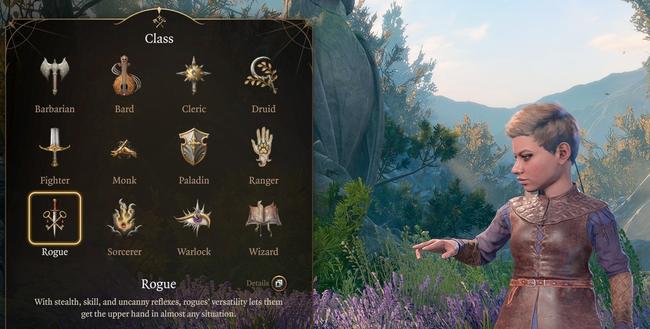
Rogue
Long thought of as a party’s resident stealth expert and Master of Unlocking, the Rogue has evolved somewhat from that niche into Baldur’s Gate 3’s ultimate “utility” class: Able to do just about anything called for…short of standing on the front lines of combat.
- Gear Proficiency: Light Armor, Simple Weapons, Hand Crossbow, Longsword, Rapier, Shortsword
- Expertise: Double proficiency bonus for two selected skills
- Sneak Attack: Deal additional damage to distracted enemies
- Cunning Action: Special Rogue actions that allow faster or unhindered movement in combat
Rogue Subclasses
- Arcane Trickster - Arcane Tricksters grease the wheels of Rogue utility with a little magic. They can cast arcane spells from the Wizard spell list to enhance their talents. They also gain access to a special version of the Mage Hand cantrip that operates invisibly.
- Thief - Thieves lean even further into the classical Rogue template, combining skill, and stealth to become the ultimate burglars. They can use additional bonus actions, resist falling damage, and even better stealth.
- Assassin - A Rogue that escalates their career goals from burglary to murder is ideal for the Assassin subclass. Assassins are even better than standard Rogues at infiltrating hostile spaces, and in combat amp up the effectiveness of their Sneak Attack, scoring criticals on unaware foes.

Sorcerer
If Wizards gain their power through careful study and practice, Sorcerers get theirs because they’re “built different”. Sorcerers wield potent magic as a natural talent, able to tweak and shape it to their will without relying on spell preparation.
- Gear Proficiency: Daggers, Quarterstaff, Light Crossbow
- Sorcerer Spellcasting
- Sorcery Points: A resource used to enable Metamagic and Flexible spellcasting
- Metamagic: Adjust and shape spells using Sorcery Points, such as extending their duration or firing range.
Sorcerer Subclasses:
- Draconic Bloodline - Drawing from the bloodline of a dragon ancestor for their power, Draconic Bloodline sorcerers gain some elemental affinity based on their bloodline, learning certain spells automatically, enhancing spells that share their bloodline’s element, and adopting a dragon’s resilience.
- Wild Magic - Wild Magic sorcerers embrace the elemental chaos that birthed their powers. They can manipulate the Tides of Chaos to their advantage, at the cost of triggering a surge of Wild Magic that contains random effects, for good or ill.
- Storm Sorcery - Powered by elemental air, Storm sorcerers are surrounded by powerful wind when casting spells, and can even briefly ride the winds to fly short distances. They also have special affinity for lightning and thunder magic.
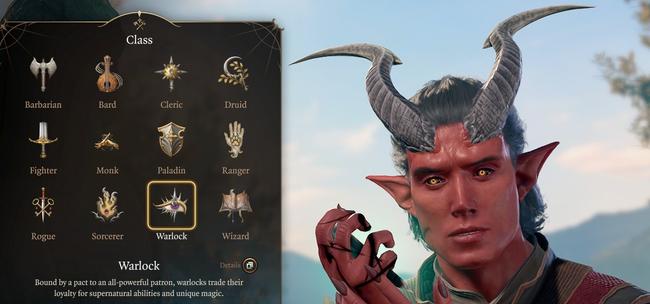
Warlock
Drawing their magic power from a connection to a powerful patron, Warlocks use their pact to power a unique approach to spellcasting. Warlocks learn their spells permanently and can cast them repeatedly, in contrast to Sorcerers and Wizards. Their Eldritch Blast is the most reliable and powerful cantrip-level spell in the game, making Warlocks the premier choice for players who want to deal magical damage on the go.
- Warlock Spellcasting
- Gear Proficiency: Light Armor and Simple Weapons
- Eldritch Blast
- Pact Boons: Special bonuses based on your choice of patron
Warlock Subclasses:
- The Fiend - The classical Warlock has made a pact with a powerful fiend, taking boons from an infernal being in exchange for arcane strength. The Dark One’s Blessing heals a Warlock when they defeat an enemy, and the Pact of the Chain grants them a fiendish familiar.
- The Archfey - Bound to Fey royalty, Warlocks loyal to the Archfey can channel the Fey’s fearsome presence, escape from harm in a puff of mist, and master mind-altering magical effects.
- The Great Old One - Making connections with the ancient, inscrutable beings from the Far Realms, Warlocks bound to a Great Old One can tap into the deep-rooted fear of the unknown found in all mundane beings, and tap into forces beyond mortal comprehension.
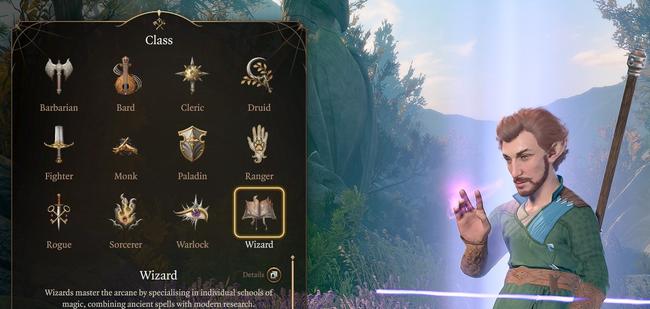
Wizard
The class that pretty much defines how Dungeons & Dragons approaches the whole concept of magic, Wizards are the paragon spellcasting class. Their mastery of specific schools of magic gives them the deepest specialization and widest breadth of magical options, at the cost of their physical vulnerability. They also have the largest number of subclass choices, based on specializing in different schools of magic.
- Arcane Spellcasting
- Gear Proficiency: Dagger, Dart, Sling, Quarterstaff, Light Crossbow
- Arcane Recovery: Replenish expended spell slots when out of combat
Wizard Subclasses:
- Abjuration - Abjurers specialize in defensive magic, using Arcane Wards to absorb damage and enhancing their and their allies resistance to harm.
- Evocation - Evokers are so devoted to elemental fireball-throwing chaos that they’ve mastered the art of sculpting spells to avoid friendly fire. Their evocation spells also deal additional damage.
- Conjuration - Despite the connotations of the word “conjure”, the school of Conjuration is surprisingly broad in its scope, and Conjurers can use the many spells under its banner with even more finesse, moving themselves and others about the field creatively.
- Divination - Diviners exploit magical improvements to their perception, seeing the shapes of the future and using their clairvoyance to avoid harm and enhance outcomes in their favor.
- Enchantment - Enchanters use their magic to mess with the perceptions of their foes, using charm spells and hypnosis to even the odds in battle or social interaction.
- Necromancy - Necromancers feed off of life energy, gaining bonuses to spells from the school, resisting necrotic damage, and summoning undead minions with enhanced stats.
- Illusion - Illusionists enhance the quality and quantity of the illusions they cast, making them last longer or be more effective in battle.
- Transmutation - Transmuters specialize in altering the properties of materials, using their skills to air in alchemy, toughening allies before a fight, or granting them new qualities, like flight.
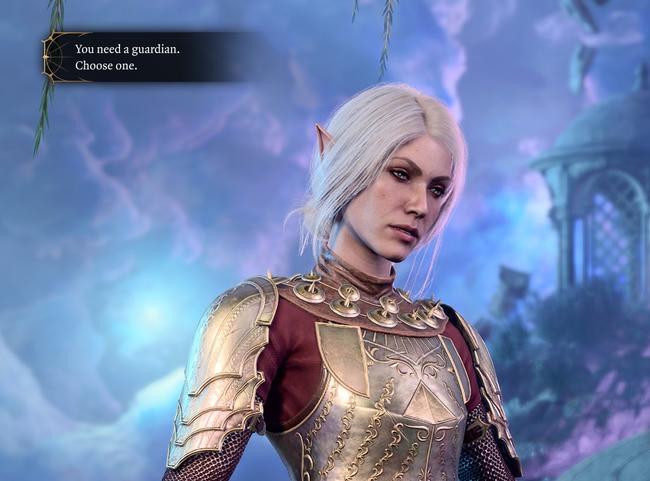
Creating Your Guardian
As you finish character creation, you’ll be prompted to create one more character. "You'll need a guardian. Choose one," the game says. This mysterious prompt is how you create your “Guardian”, a special character that’s not quite a party member, and not quite a random NPC.
Without getting too much into spoiler territory, your Guardian represents a special narrative thread with a character that only you, the player, can see and interact with.
Feel free to create your Guardian according to your own preferences, choosing any combination of appearance and race you wish. In the words of developer Larian Studios, the Guardian “represents all that you desire,” so go ahead and sculpt them as you wish them to be.
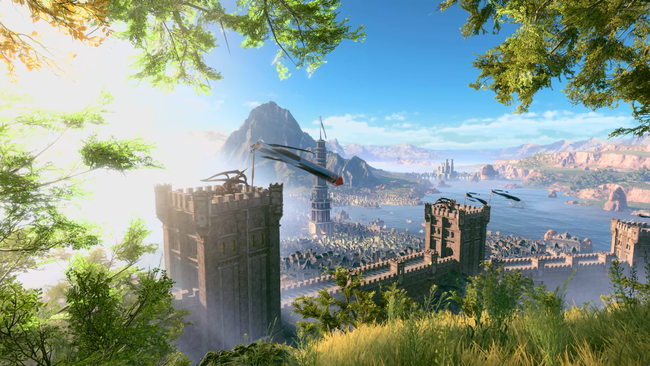
Venture Forth!
This should cover the basics of creating your character in Baldur’s Gate 3. If you want more in-depth advice about the game and its classes, stay tuned to RPG Site for more guides, including individual class guides, companion guides, and more.